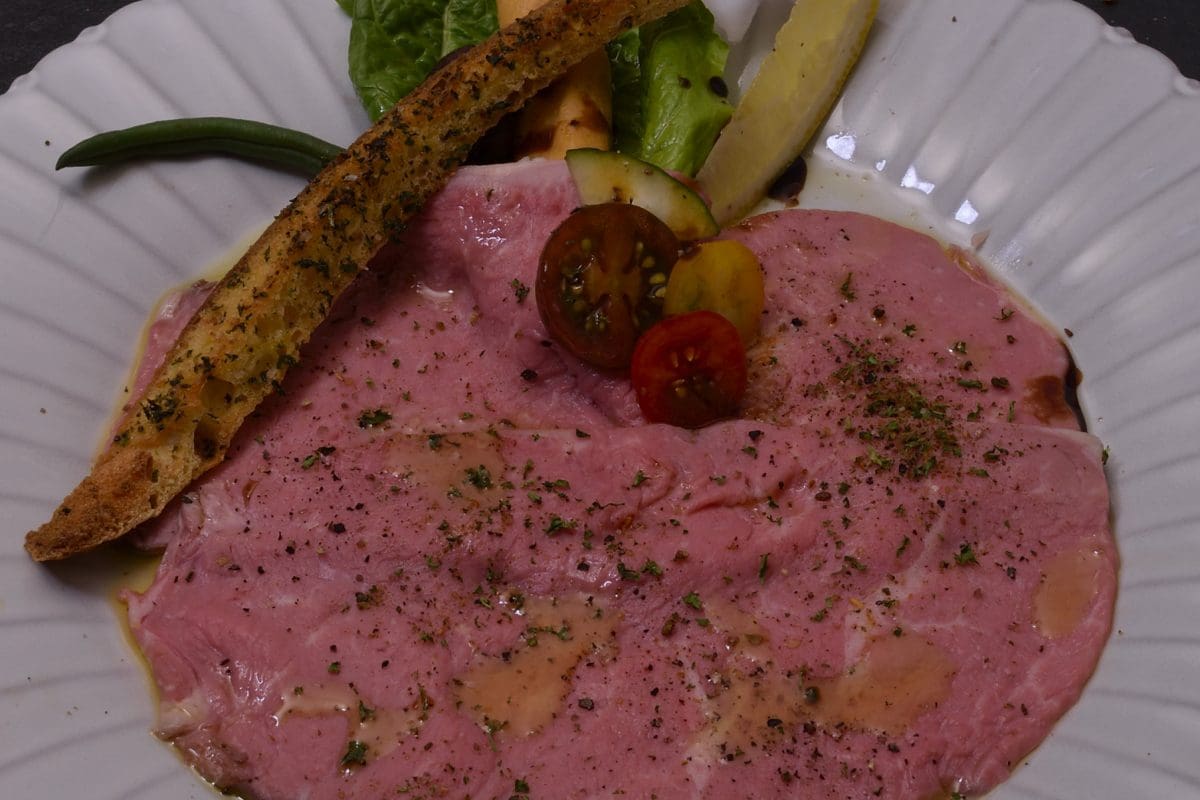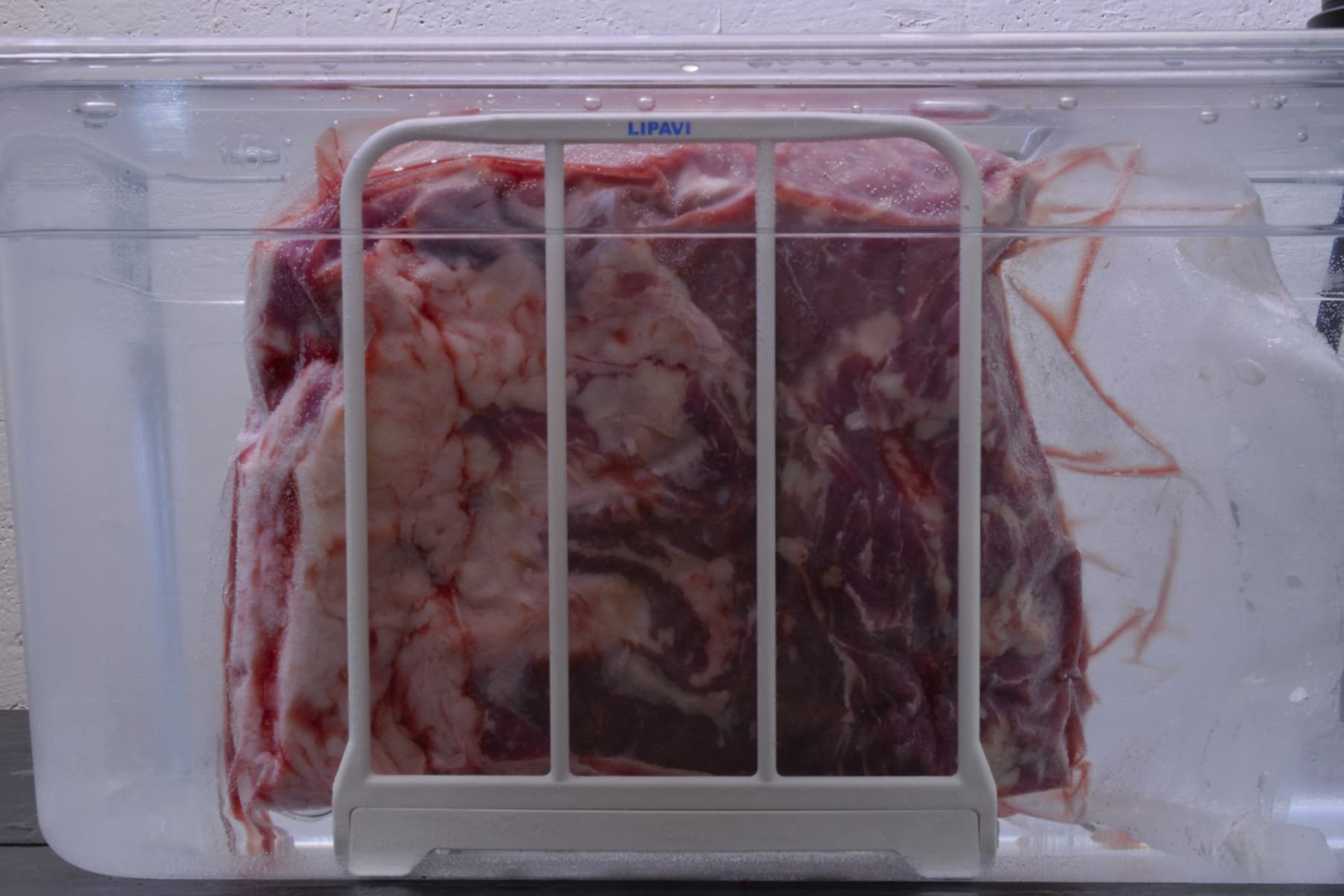
Procedure:
Set the sous vide bath to
129 F/54 C.
Stage the strip loin into a dedicated vacuum bag. Seal and sous vide process for 6 hours. This will pasteurize/preserve the protein. Submerge the unopened package in iced water until 70 F/21 C is achieved–this usually takes about 15 minutes. Remove the protein from the bag and discard or save the juices. FREEZE the strip loin until it achieves approximately 15 F/-9 C. Chefs do this routinely to make the beef easy to slice thin–either manually or mechanically.
The alternative is to refrigerate the sirloin to 40 F/4 C after cold shocking. Put thin slices of the beef between sheets of plastic wrap and tap with a wooden mallet until they are the desired thickness. They can be frozen until service so the plastic comes right off. There are other ways to accomplish this–these are the easiest that I have come across.
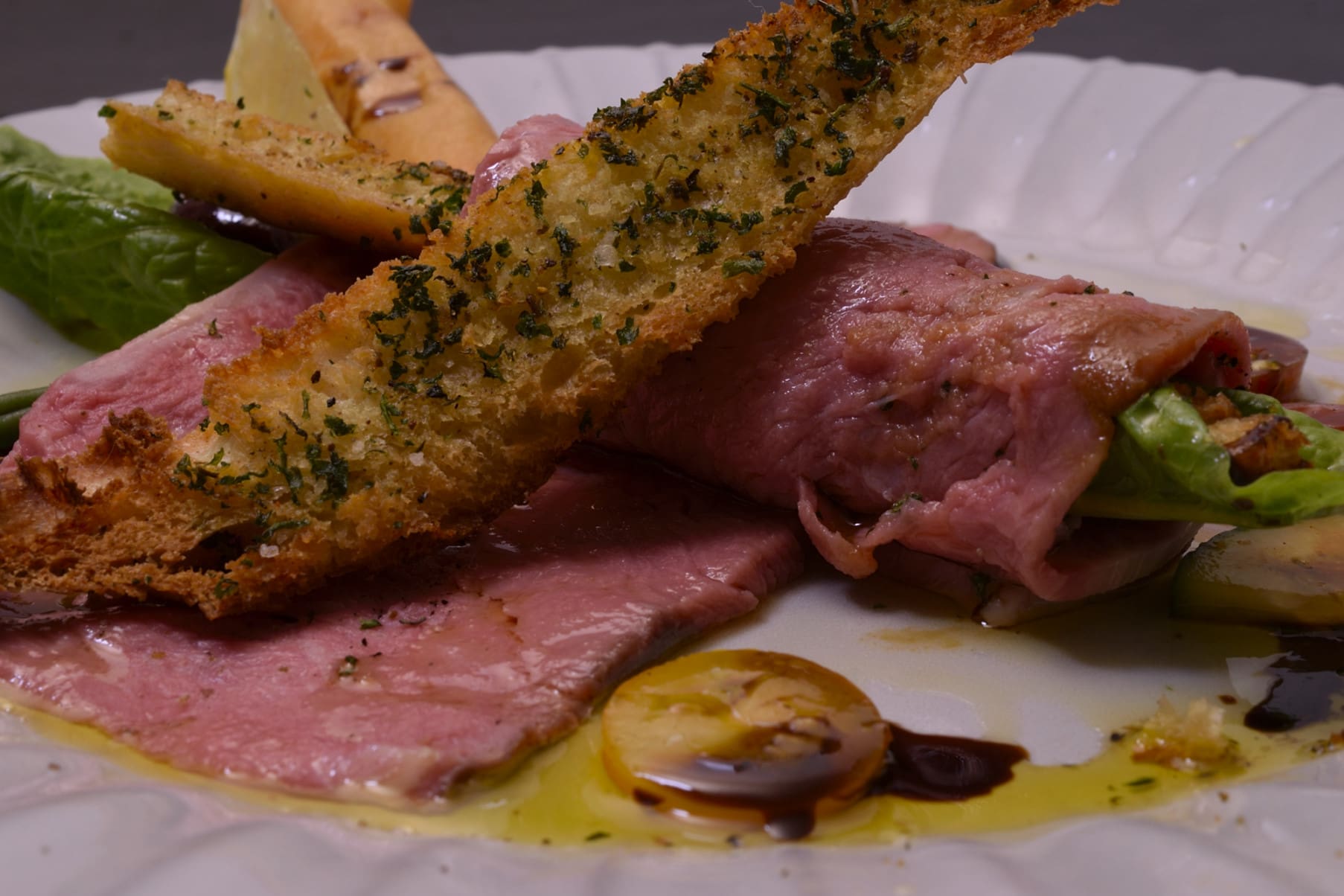
Finishing and service
Refrigerate a large plate until it achieves 40 F/4 C. Set on a work space and start by slicing one piece of the beef. Arrange each piece of beef on the plate as you slice them, one by one. They should just touch each other, but not overlap.
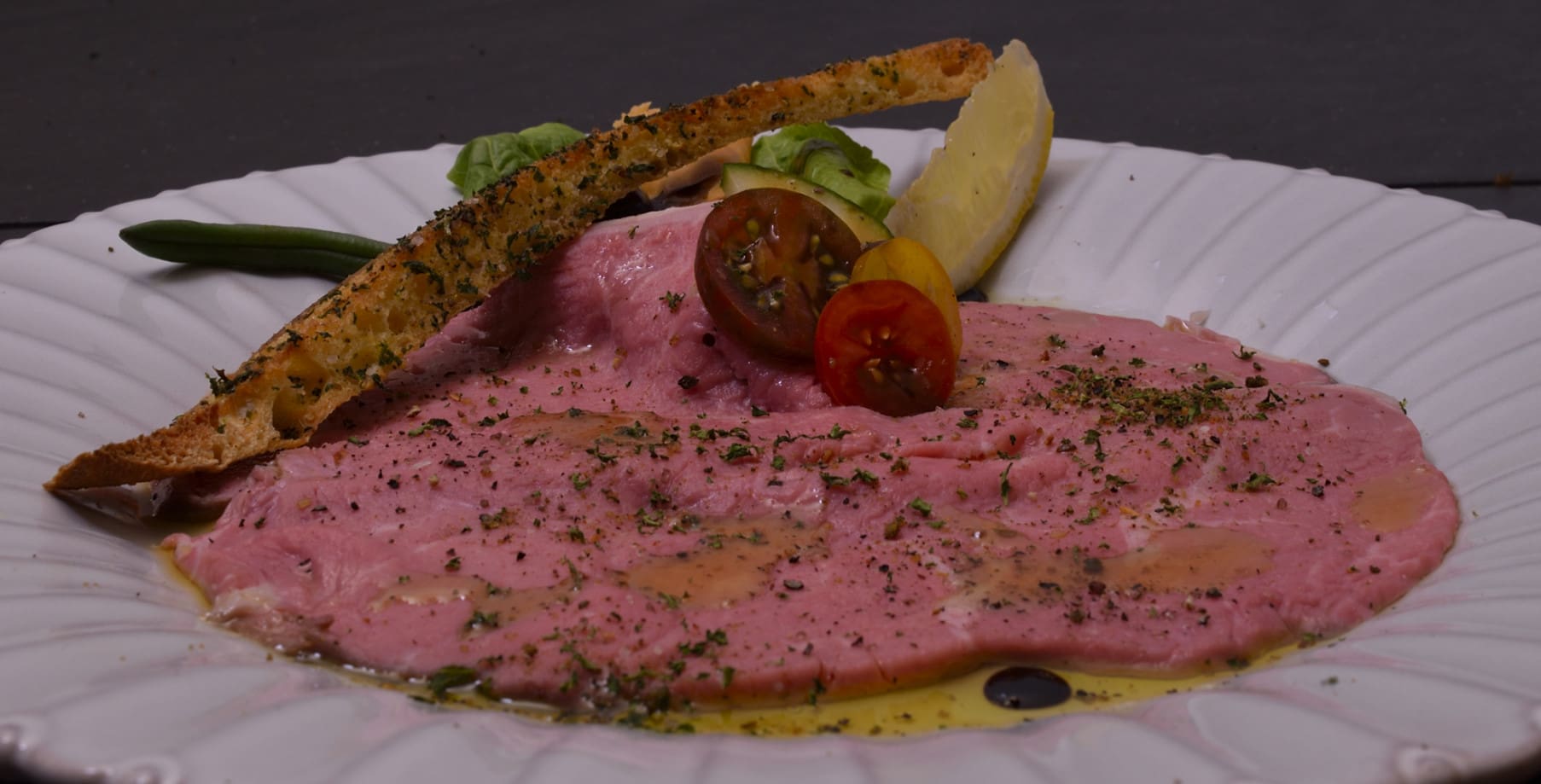
This will make a huge difference in the final appearance of the dish–the original presentation looked flat like a painting, but nothing is engraved in stone.
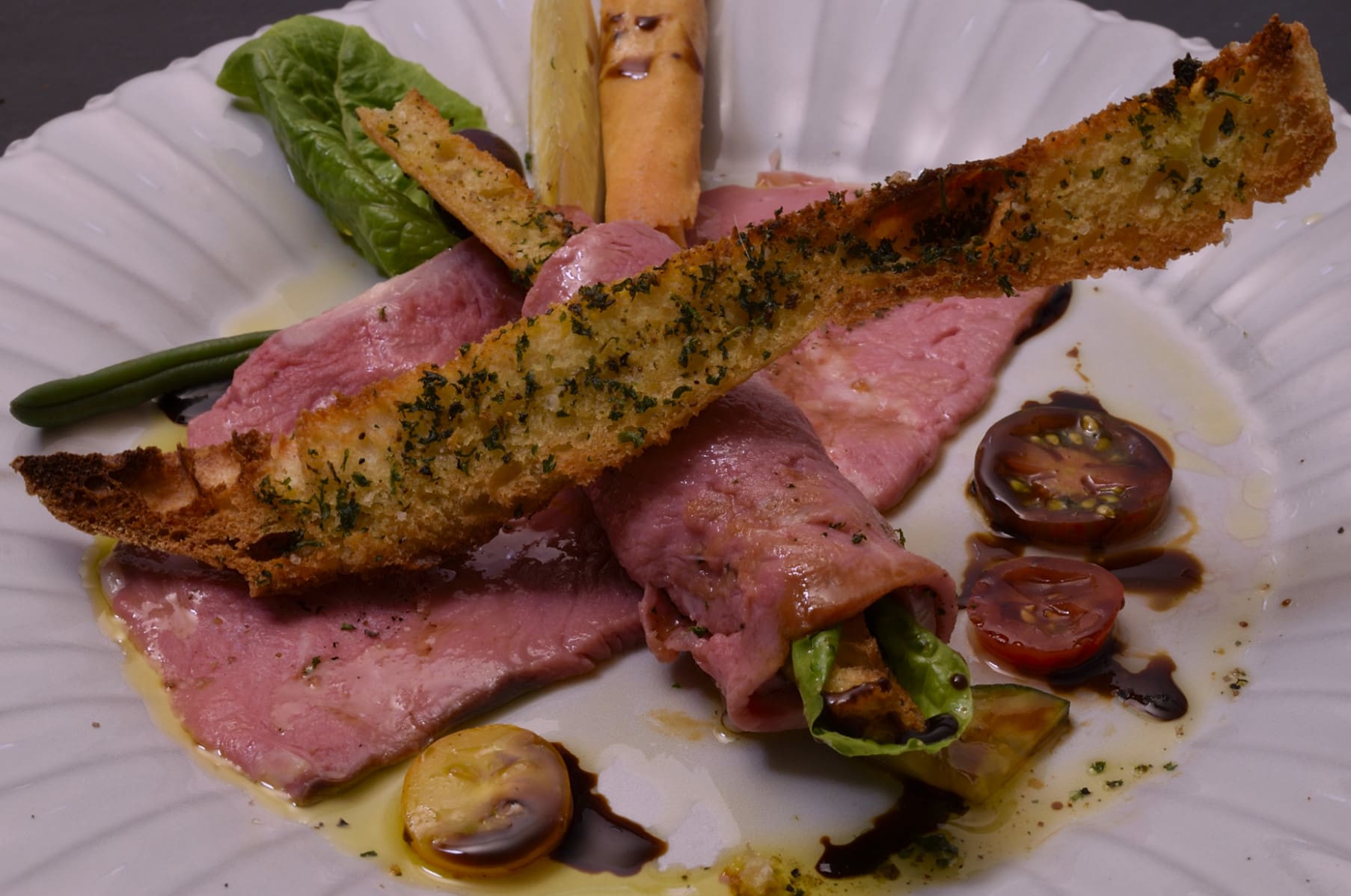
We have created a few variations.
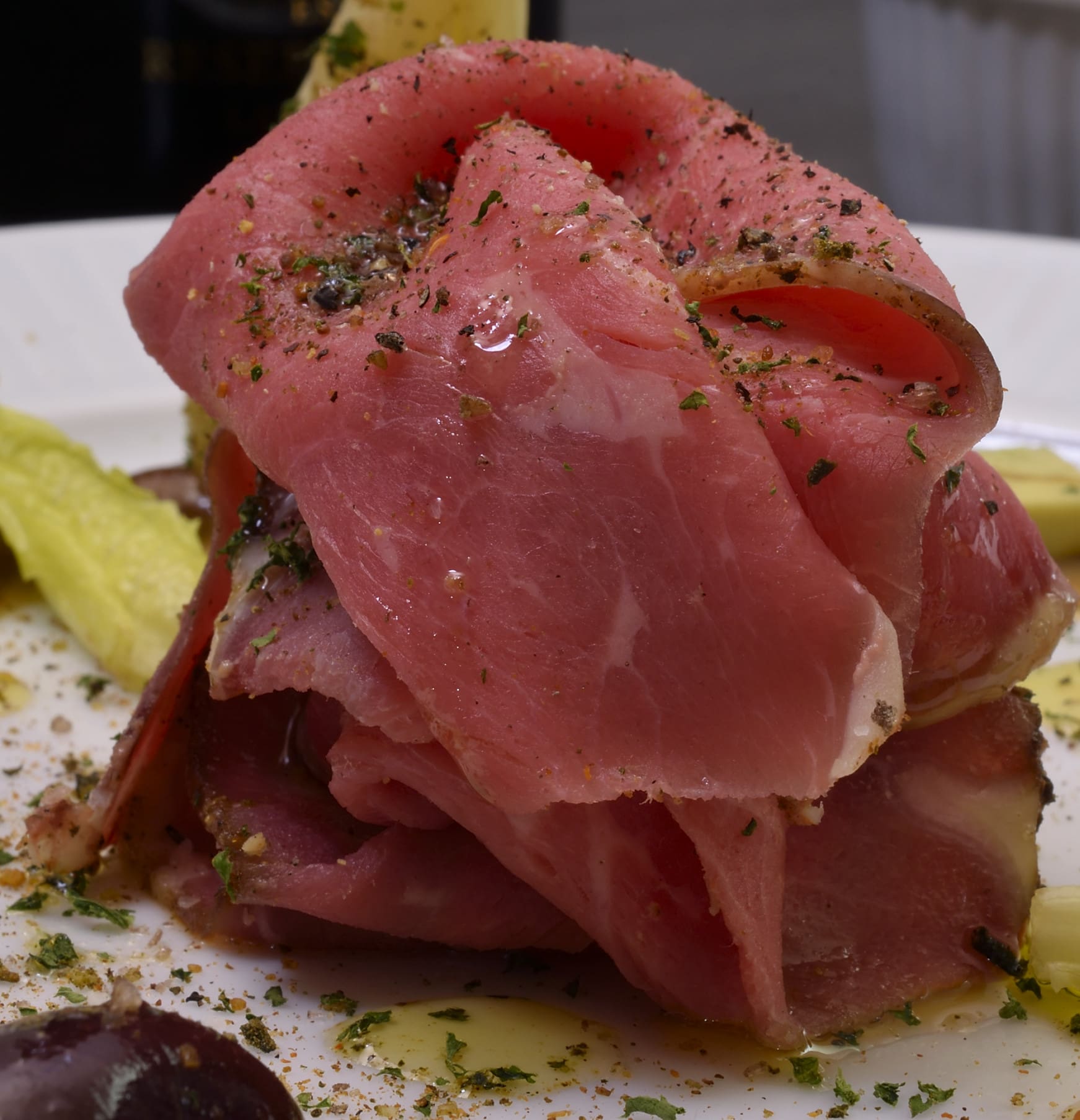 The other ingredients are intended to evoke the relief/altitude created by applying thick brush strokes of paint to the artist’s work.
The other ingredients are intended to evoke the relief/altitude created by applying thick brush strokes of paint to the artist’s work.
Grind black pepper over the Carpaccio. Place the lemon wedge and a small section of bread on the rim and serve immediately.

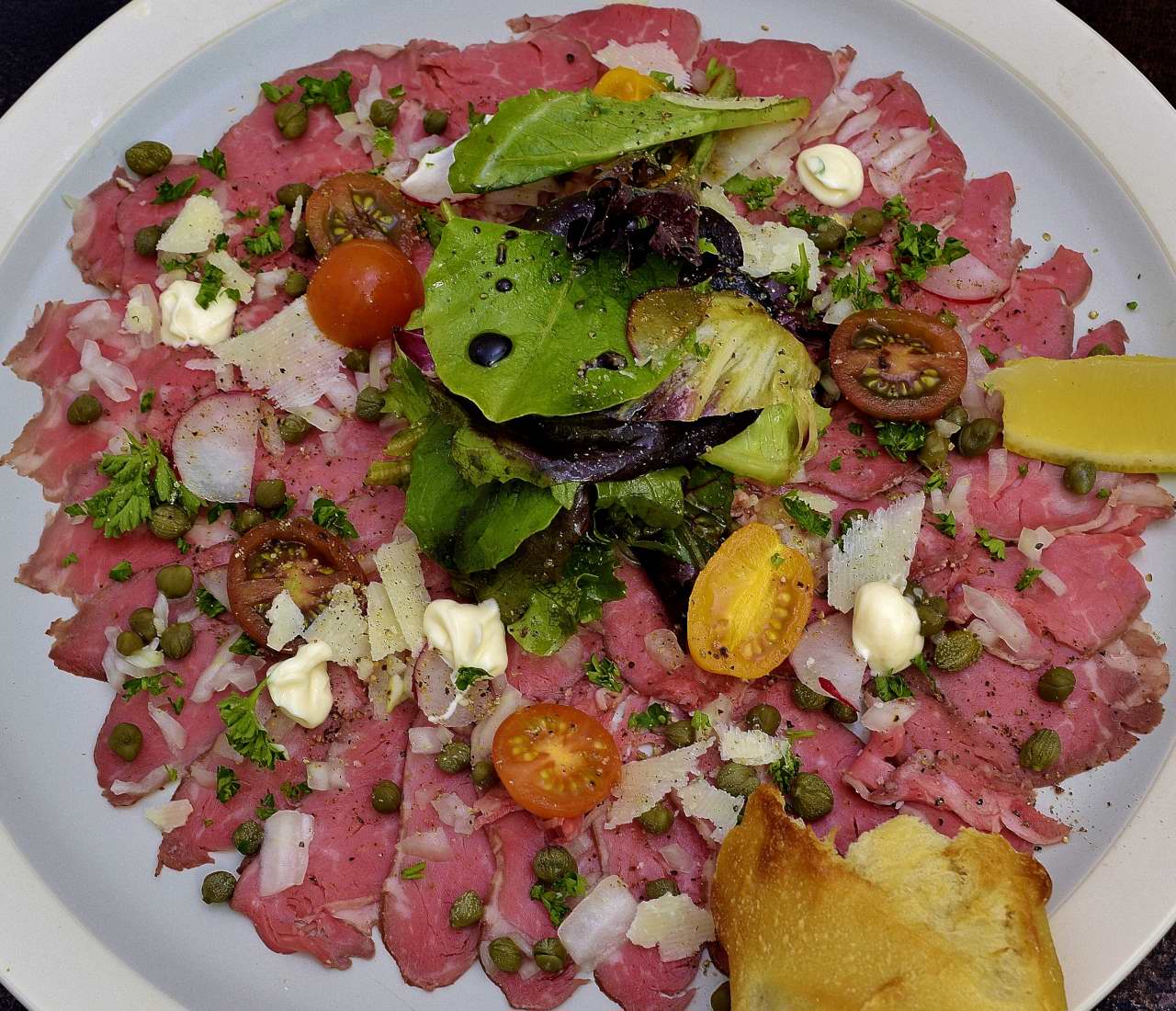
Above: “Kitchen Sink” Carpaccio.
This is a truly unique dish. Somehow, the Italians have synergized their cuisine to include an almost sushi-like characteristic.
Enjoy!
